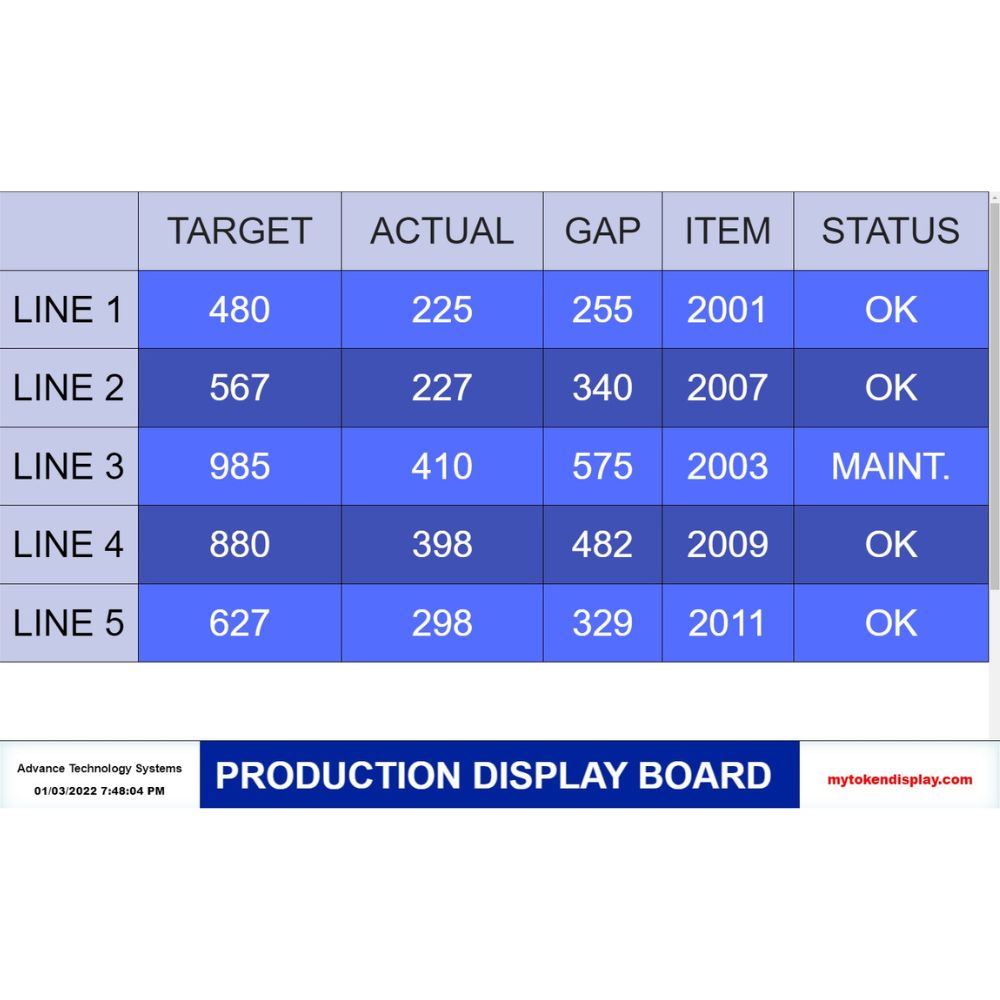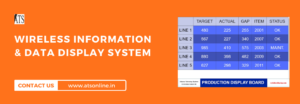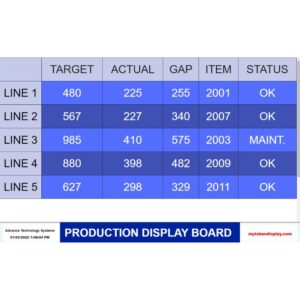Data display boards are an essential tool for managing and displaying information in various industries. These boards are used for displaying real-time data, trends, and other important information to help organizations make informed decisions. With the advancement of technology, data display boards have become increasingly sophisticated and can now be customized to meet specific needs.
In this article, we will provide a comprehensive guide to understanding data display boards, including their features, benefits, and types. We will also look at how organizations can choose the right data display board for their needs and provide tips for maintaining and using these boards effectively.
Features of Data Display Boards
Data display boards come with a variety of features that make them an indispensable tool for organizations. Some of the most common features include:
- Real-time data display: Data display boards are designed to display real-time data, allowing organizations to make informed decisions quickly and efficiently.
- Customization: Data display boards can be customized to meet the specific needs of an organization, including the type of data displayed, the layout of the board, and the color scheme.
- Alerts and notifications: Data display boards can be programmed to send alerts and notifications, making it easy for organizations to stay informed about important events and trends.
- Easy-to-read: Data display boards are designed to be easy to read, with clear and concise information displayed in an organized manner.
- Remote access: Many data display boards offer remote access, allowing organizations to access real-time data from anywhere with an internet connection.
Benefits of Using Data Display Boards
Data display boards provide numerous benefits to organizations, including:
- Improved decision-making: Data display boards provide real-time information, allowing organizations to make informed decisions quickly and efficiently.
- Increased efficiency: Data display boards help organizations to streamline processes, reduce downtime, and increase overall efficiency.
- Enhanced communication: Data display boards provide a visual representation of information, making it easier for organizations to communicate with employees, customers, and partners.
- Improved monitoring: Data display boards provide real-time data, allowing organizations to monitor performance, identify trends, and take proactive measures to improve performance.
- Better data management: Data display boards help organizations to manage and organize data, making it easier to track progress and identify areas for improvement.

Types of Data Display Boards
Data display boards come in various types, including:
- LED Display Boards: LED display boards are one of the most common types of data display boards. They are cost-effective, energy-efficient, and easy to use.
- LCD Display Boards: LCD display boards offer high-quality display and are ideal for organizations that need to display detailed information.
- OLED Display Boards: OLED display boards are a newer type of data display board that provides high-quality, bright displays that are ideal for outdoor use.
- Interactive Display Boards: Interactive display boards allow users to interact with the data displayed, making it easier to access and analyze information.
Choosing the Right Data Display Board
When choosing a data display board, it is important to consider the specific needs of your organization. Some factors to consider include:
- Purpose: Consider the purpose of the data display board, including the type of information you need to display and the environment in which it will be used.
- Size: Consider the size of the display board, taking into account the amount of information you need to display and
- the space available for the board.
- Cost: Data display boards come in various price ranges, so it’s important to consider your budget when choosing a board.
- Customization: Consider the level of customization you need, including the layout of the board, the color scheme, and the ability to display real-time data.
- Maintenance: Consider the maintenance requirements of the board, including the cost of replacement parts and the ease of repairing the board if it becomes damaged.
- Support: Choose a data display board that comes with adequate support, including technical support, customer service, and access to online resources.
Tips for Effective Use of Data Display Boards
To effectively use data display boards, consider the following tips:
- Display relevant information: Display only the information that is relevant to your organization, and ensure that it is displayed in a clear and concise manner.
- Regular updates: Regularly update the data displayed on the board to ensure that it remains accurate and relevant.
- Organize data: Organize the data displayed on the board in a manner that is easy to understand and provides context to the information.
- Monitor performance: Regularly monitor the performance of the data display board to ensure that it is working as expected and identify any areas for improvement.
- Provide training: Provide training to employees who will be using the data display board to ensure that they are able to effectively use the board.

Conclusion
Data display boards are an essential tool for organizations looking to improve decision-making, increase efficiency, and enhance communication. With the right data display board and effective use, organizations can effectively manage and display real-time data, making it easier to make informed decisions and track progress. We hope this comprehensive guide has provided you with a better understanding of data display boards and how they can be used to meet the needs of your organization.
Thank you for reading our blog. We hope you found the information helpful. If you have any further questions or would like to know more about our services, please visit our website www.atsonline.in, give us a call at +91-9810078010, or send us an email at ats.fnb@gmail.com. At Advance Technology Systems, we’re always happy to help





